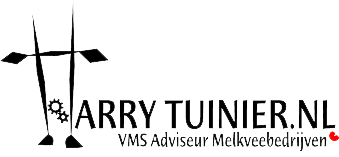Opportunities for cows that are difficult to attach the teatcups.
Incomplete milking is always annoying! Finding the teats with difficulty not only results in loss of time but also annoyance, both for the farmer and for the cow.
On top of that, the risk of udder infections also increases.
Several Tips have already been written about incomplete milkings. With the VMS Classic we aim for a percentage of incomplete milkings of less than 5%. With the VMS V300 we believe that this percentage should be below 2%.
What is well known is that you should keep the camera clean, even in the top corners, having no space on the arm and should neatly connect the teat in the middle of the cup.
In the lists, under “Milking Info”, the list “Milking performance” is included. By sorting on incomplete milkings, the penultimate column, you can see exactly which cows have incomplete milkings most often.
Over the years I have compiled a list of 14 points for the VMS Classic, and 9 points for the VMS V300 that can help assess and possibly use the settings of the individual cow to try for better attach in the future.
This is often issued during company visits, if you do not have it (anymore), or if you want an update, just send an email and I will send it to you.
Please state for which type of VMS you’d like to receive these points.






